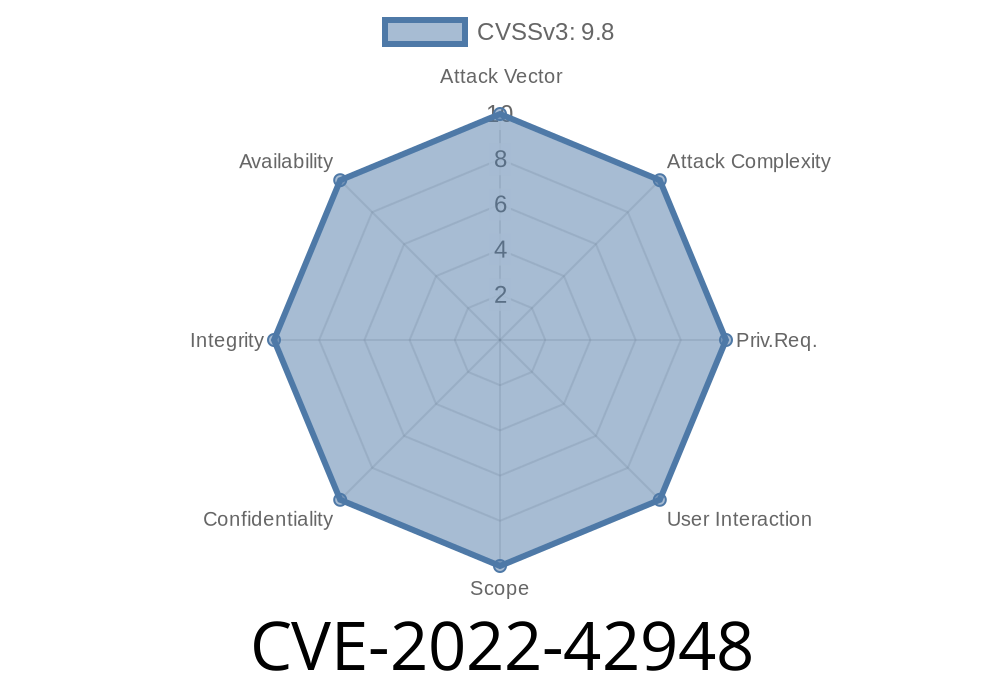Cobalt Strike is a popular commercial penetration testing tool that aids security testers in conducting targeted cyber-attack simulations. It provides several advanced capabilities, such as web drive-by attacks, spear-phishing, and post-exploitation activities, to mimic real-world security threats.
Recently, a vulnerability (CVE-2022-42948) was discovered in Cobalt Strike version 4.7.1. The vulnerability stems from Cobalt Strike's inability to properly escape HTML tags when rendering them on Swing components, enabling attackers to inject malicious HTML code and potentially execute arbitrary code in the Cobalt Strike UI.
In this post, we'll discuss the technical details of the vulnerability, provide a code snippet, and share links to original references and resources.
Technical Overview
The vulnerability exists in Cobalt Strike's Swing components, which are used for constructing graphical user interfaces (GUIs). Swing components, such as JLabel and JTextPane, are prone to processing HTML tags embedded within their text. If an attacker can inject crafted HTML code into these components, it may be possible for that attacker to remotely execute code in the Cobalt Strike UI.
For example, consider the following code snippet
import javax.swing.*;
public class CVE202242948Demo {
public static void main(String[] args) {
SwingUtilities.invokeLater(() -> {
JLabel vulnerableLabel = new JLabel("This is a vulnerable Swing JLabel: <img src=\"https://example.com/malicious.png\"/>";);
JFrame frame = new JFrame("CVE-2022-42948");
frame.setDefaultCloseOperation(JFrame.EXIT_ON_CLOSE);
frame.add(vulnerableLabel);
frame.pack();
frame.setVisible(true);
});
}
}
In this example, the JLabel is displaying an HTML img tag, which makes a remote request to a potentially malicious website. If the website hosts an image that contains crafted code or triggers the execution of embedded code, the attacker can potentially compromise the Cobalt Strike UI.
Exploit Details
An attacker exploiting CVE-2022-42948 must craft and inject HTML code into the affected Swing components within Cobalt Strike. This may be achieved through various methods, such as sending a specially crafted phishing email with the embedded HTML code or embedding the code in a browser-based drive-by attack.
Once the vulnerability has been exploited, the attacker can remotely execute code within the Cobalt Strike UI, possibly gaining unauthorized access to sensitive information or control over the target system.
Links to Original References
1. CVE-20225494: NIST NVD - [https://nvd.nist.gov/vuln/detail/CVE-2022-42948]
2. Cobalt Strike Official Blog - [https://blog.cobaltstrike.com/]
3. Oracle's Swing Tutorial - [https://docs.oracle.com/javase/tutorial/uiswing/]
Conclusion
CVE-2022-42948 is a critical vulnerability that affects Cobalt Strike 4.7.1, allowing attackers to inject malicious HTML code and potentially execute arbitrary code in the Cobalt Strike UI. It's important to stay informed about security updates and always exercise caution when interacting with untrusted data sources.
Timeline
Published on: 03/24/2023 14:15:00 UTC
Last modified on: 03/30/2023 18:30:00 UTC
